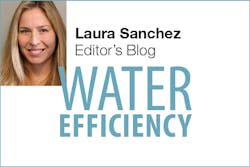Editor's note: This blog was originally published on February 27, 2019.
The Mariana Trench, a deep, 1,500-mile by 43-mile trough in the ocean floor east of the Philippines, was formed at the collision point of two tectonic plates. At its most profound point, the trench is nearly 7 miles deep. According to National Geographic’s Deep Sea Challenge, “If Mount Everest were dropped into the Mariana Trench, its peak would still be more than a mile underwater.”
The creatures that inhabit the trench—shrimp-like crustaceans called Amphipods, sea cucumbers, and protists called Foraminifera—have adapted their behavior to harvest from the few nutrient-bearing ocean currents that reach the bottom. They’re extraordinary scavengers.
The relative scarcity of food at profound depths makes these creatures both voracious and not at all picky—a combination that makes them particularly vulnerable to consuming non-food particles like plastics. And because these creatures form the bottom of the trench food webs, what they consume affects larger ecosystems.
Alan Jamieson, a marine biologist from Newcastle University has spent much of his career studying the abyssal animals of the ocean’s deepest geographies and how they differ from one trench to another. A few years ago, he decided to test a sampling of amphipods for human-made pollutants such as polychlorinated biphenyls (PCBs). He simultaneously discovered astonishingly high rates of PCBs and plastic consumption among amphipods.
In fact, Jamieson and his student Lauren Brooks discovered plastic fibers and fragments in 72% of the amphipods that they collected from each of the six trenches that they sampled from. “In the least polluted of these sites, half of the amphipods had swallowed at least one piece of plastic,” according to The Atlantic. “In the 6.8-mile-deep Mariana Trench, the lowest point in any ocean, all of the specimens had plastic in their gut.” Their research is the first to document the presence of microplastics in the digestive tracts of abyssal crustaceans.
Biologists consider this discovery evidence that no marine ecosystem remains untouched by plastic today. We consider it a call to action. What are your thoughts? What solutions can you suggest for reducing plastics in marine environments? What steps are the water and wastewater industry taking to prevent plastics from entering waterways?

